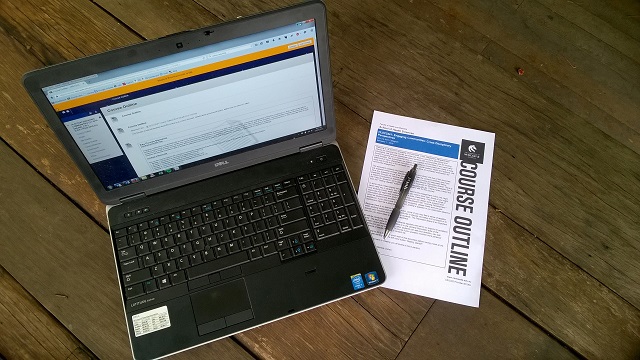 I’m in the process of restructuring the undergraduate online elective I teach on community engagement (HLSC2241). I have made quite a few chances since developing it in 2008, but I’ve been finding students were confusing some of the concepts involved and suspect it’s because community engagement means different things in different contexts. I used to have five modules:
I’m in the process of restructuring the undergraduate online elective I teach on community engagement (HLSC2241). I have made quite a few chances since developing it in 2008, but I’ve been finding students were confusing some of the concepts involved and suspect it’s because community engagement means different things in different contexts. I used to have five modules:
- Introduction to community engagement
- Building on community strengths
- Strategies for community engagement
- Case studies of community engagement
- Summing up
The new structure is based on three broad areas where community engagement is used:
- Introduction to community engagement
- Community engagement in community development
- Community engagement in service delivery
- Community engagement in planning and decision-making
- Summing up
By focusing on each of the areas in a different module, there will be less confusion about the purpose and strategies for community engagement in each context. Of course these broad areas are not discrete boxes and we often focus on more than one of these areas at a time, but I think breaking it down will make it easier for students to understand some of the different approaches to community engagement. Because students come from such a wide range of disciplines I hope this new structure will help them find material that is most relevant to their context and see how community engagement could apply in their future careers.
I’ve updated the reading list for the course (about 80% of them are new) to reflect the revised structure, to make sure there are both theoretical and practice based papers, and to keep the readings current. You can see the revised reading list here.
The other major change is in the assessments. Because it’s all online, in order to engage students more, they need to make a number of posts to an online discussion board. There are four main topics and for three of them they need to make a post and then comment on the posts by at least two other students. For the fourth topic (a reflection on what they’ve learnt) they don’t need to comment on each other’s posts to reduce the sense of being judged. Some of these posts act as scaffolding for other assignments and, essentially, if they do the posts they get the marks.
There used to be an online quiz about the readings from each of the first two modules, but some students suggested it would be good to have a quiz for each module as it helped to reinforce the key messages. So there will now be four quizzes. It’s quite hard work creating good questions (and potential answers) but once it’s done, they work well. The marking is done automatically and students receive immediate feedback (including where to find more info) for each question so it helps to reinforce the key information.
Because there are increased online quizzes I’m reducing the first major assignment. It used to be a fairly theoretical paper and I’m experimenting with a series of short-answer questions. I’m not sure how it will go, but suspect it will help students to demonstrate their understanding of community engagement in a range of areas without having to be a great essay writer.
In the capstone assignment (due in the second last week of semester) they have to critique an example of community engagement. They are free to draw on they own experience by choosing an example they have been involved in or selecting some other example relevant to their discipline.
I’m still in the process of updating the assignments and redoing all the notes and lectures, but it has to be ready by 22 February 2016 – three weeks to go! It’s a lot of work but I think it will be worth it and make a big difference to the course.
If you liked this post please follow my blog (top right-hand corner of the blog), and you might like to look at:
- A community engagement reading list
- Teaching community engagement to students from 29 disciplines
- 3 types of community engagement (with related concepts and literature)
- Selecting an example of community engagement to critique
- Ethics and community engagement
- 10 things I’ve learnt about strengths-based community engagement

